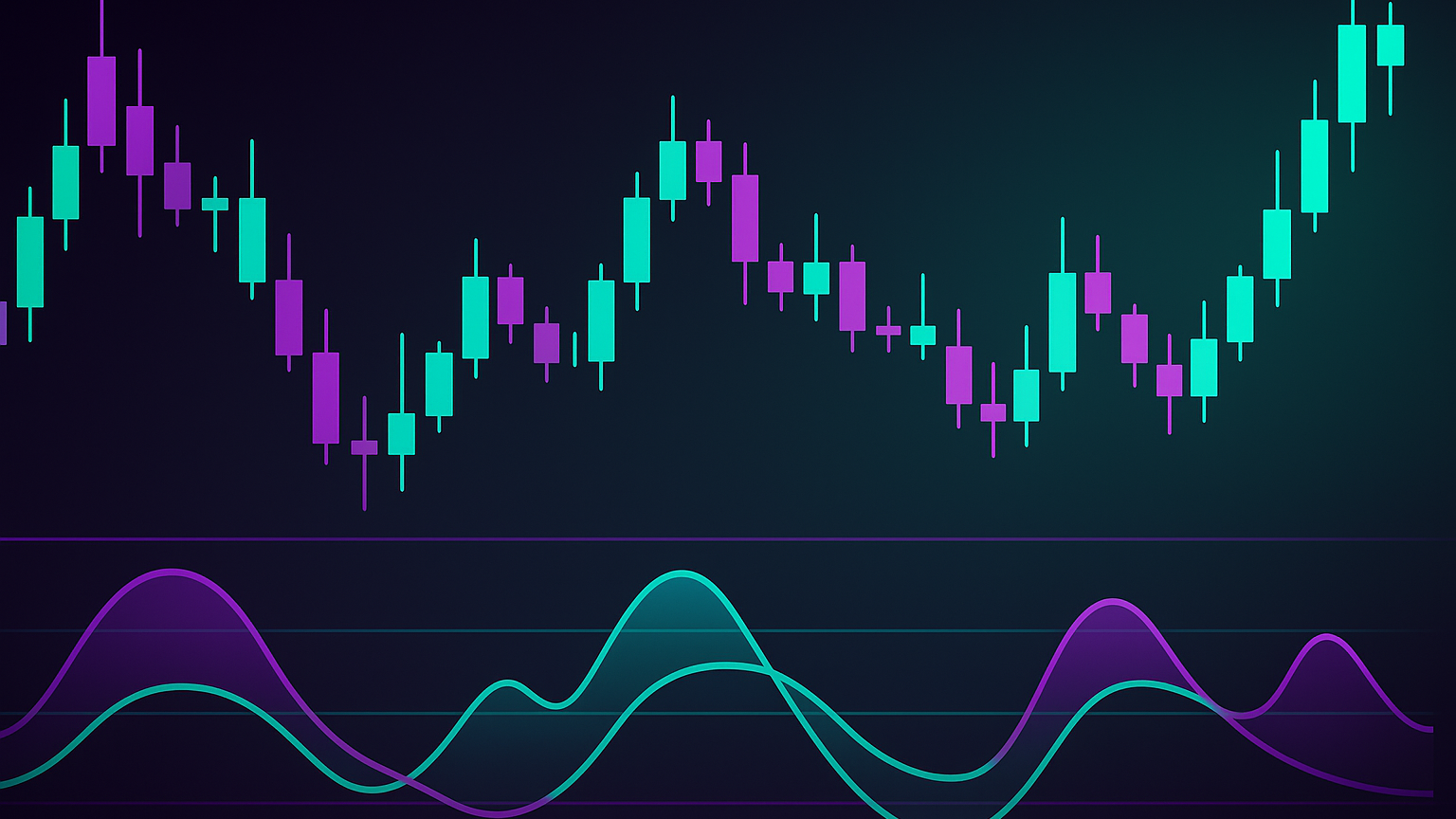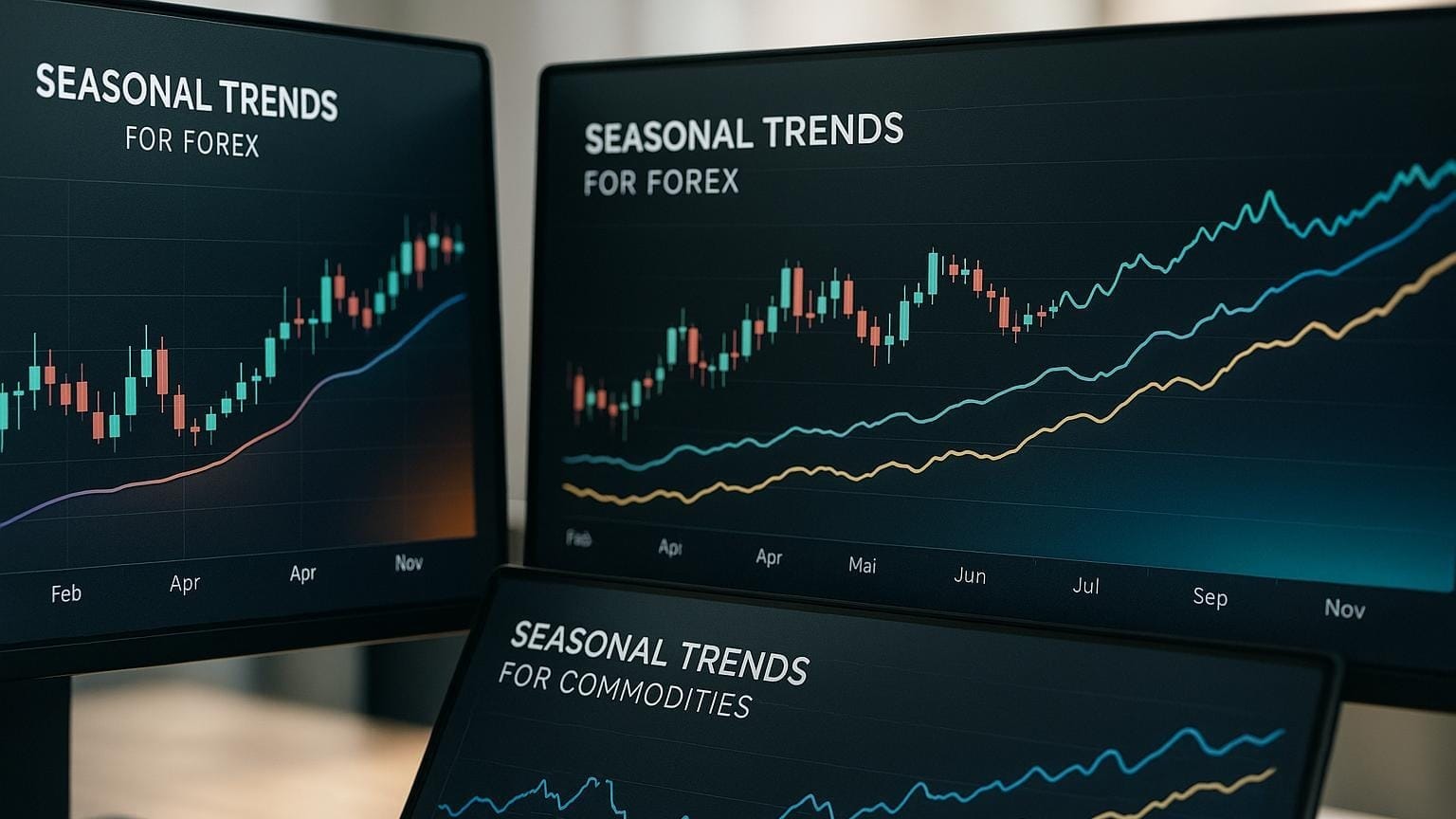Learn the Opening Range Breakout trading strategy, its execution tips, and how to improve accuracy with technical indicators and risk management.
The Opening Range Breakout (ORB) strategy is a structured trading method that focuses on the price range established in the first minutes of a market session. Here’s how it works and why traders rely on it:
- What is ORB? Identify the high and low prices during the initial minutes (e.g., 5, 15, or 30 minutes) of the trading session. A breakout above or below this range signals potential trading opportunities.
- Why it Works: ORB takes advantage of early-session volatility and momentum, offering clear entry and exit points for trades.
- Key Benefits:
- Works across stocks, forex, and other assets.
- Defined stop-loss and profit targets for better risk management.
- Flexible timeframes to suit different trading styles.
- Execution Tips:
- Confirm breakouts with strong volume.
- Use stop-loss levels based on range size.
- Set profit targets using risk-reward ratios or technical levels.
For example, if a stock’s opening range is $48–$50, a breakout above $50 may signal a buying opportunity, while a drop below $48 could indicate selling.
Quick Tip: Always backtest your chosen timeframe and validate breakouts with volume to avoid false signals.
This strategy thrives on discipline and clear rules. Keep reading for detailed steps, tools, and risk-management techniques to master ORB trading.
Master the Opening Range Breakout (ORB) Trading Strategy in Just 10 Minutes!
How to Find the Opening Range
The opening range refers to the high and low prices within a specific timeframe right after the market opens. This range helps traders identify breakout points for potential trades.
Time Frames for Opening Range
The timeframe you choose for the opening range depends on your trading style and the market you’re working with. For U.S. stocks, the trading session begins at 9:30 AM EST, and here’s how different traders approach it:
- 5-Minute Range: Ideal for scalpers and aggressive traders. This shorter timeframe offers quick entry points but comes with a higher risk of false breakouts. For example, if S&P 500 futures show a range high of 2 880 .25 and a low of 2 875 .75, a breakout at 9:35 AM could signal a bullish move.
- 15-Minute Range: Popular among day traders. It balances speed and accuracy, making it a standard choice for ORB strategies.
- 30-Minute Range: Suitable for intraday swing traders. This timeframe provides more reliable signals, especially when economic news drives volatility and volume.
- 60-Minute Range: Often used by position traders and forex traders. It aligns with major market sessions but may miss short-term moves.
| Timeframe | Best For | Advantages | Considerations |
|---|---|---|---|
| 5 minutes | Scalpers, futures traders | Quick entries and short-term moves | Higher risk of false breakouts |
| 15 minutes | Day traders | Balanced speed and accuracy | Standard choice for ORB traders |
| 30 minutes | Intraday swing traders | More reliable signals | Slower breakout reaction |
| 60 minutes | Position traders, forex | Aligns with major market sessions | May miss short-term moves |
Interestingly, research shows that around 35 % of daily highs or lows occur within the first 30 minutes of trading. Once you’ve chosen your timeframe, the next step is to use the right resources to define and validate the range.
Tools for Marking the Range
After setting your timeframe, technology can simplify the process of identifying the opening range. LuxAlgo’s Price Action Concepts (PAC) toolkit can automatically detect these levels, minimizing human error and saving time.
To mark the range manually, track the highest and lowest prices within your chosen timeframe. Some traders also use the prior day’s closing price for added context. Volume-profile analysis is another useful technique, as high trading volumes near the range boundaries often indicate stronger support or resistance levels.
"The premise of the opening-range strategy is finding a timeframe that suits your style of trading and getting long above the top of the opening range and getting short below the bottom of the opening range. Simple enough?" – George, TRADEPRO Academy
LuxAlgo offers customizable indicators that allow traders to monitor ranges in real time and analyze historical data. This flexibility helps you backtest different timeframes to discover what works best for your trading approach.
When defining your range, focus on liquid markets. These markets tend to have more predictable price movements and smoother order execution. Consistency in your chosen timeframe is also key to building reliable trading skills.
Accurately defining the opening range is essential for executing breakouts effectively and managing your risk throughout the trade.
How to Execute ORB Trades
Once you’ve defined your opening range, the next step is executing trades by confirming breakouts, managing risk, and setting clear profit targets. Here’s how to approach each aspect effectively.
Spotting Breakout Signals
To confirm a breakout, wait for a candle to close above the opening-range high for long trades, or below the range low for short trades. It’s crucial to verify the breakout with increased trading volume, as this indicates strength behind the move.
For instance, if Apple’s opening-range high is $150.25, you’d wait for a candle to close above this level with volume exceeding the average of the last five candles. This ensures the breakout is genuine, reducing the risk of false signals.
Some traders refine their strategy based on broader market trends. For example, if the S&P 500 futures show bullish momentum and your stock’s opening range is above the previous day’s range, you might focus solely on long trades above the ORH. Always prioritize waiting for a full candle closure to avoid premature entries.
Stop-Loss and Risk-Management
Effective stop-loss placement is a cornerstone of ORB trading, helping you manage risk while staying adaptable to market conditions. Here are three common approaches:
- Conservative: Place the stop-loss at the opposite end of the range. This provides a 1:1 risk/reward ratio, giving the trade more room to breathe during volatile periods.
- Moderate: Use the midpoint of the range as your stop-loss level. This offers a balanced 1:1.5 risk/reward ratio, suitable for traders seeking a middle ground.
- Aggressive: Set the stop-loss just near your entry point. This approach aims for a 1:2 risk/reward ratio but comes with a higher likelihood of being stopped out prematurely.
| Stop-Loss Placement | Risk-Reward Ratio | Best For | Considerations |
|---|---|---|---|
| Opposite range boundary | 1:1 | Those comfortable with wider stops | Provides room for price fluctuations |
| Range midpoint (50 %) | 1:1.5 | Balanced-approach seekers | Balances risk and potential reward |
| Near entry boundary | 1:2 | Aggressive traders | Tight stops, higher chance of false exits |
Market volatility should guide your choice. During highly volatile sessions, consider using wider stops to avoid being prematurely stopped out by normal price swings. The Signals & Overlays (S&O) toolkit from LuxAlgo can dynamically adjust stop-loss levels in response to changing market conditions.
Setting Profit Targets
Profit targets are just as important as stop-losses, and there are several methods to establish them:
- Risk-Reward Ratio: A simple method involves setting a target based on your initial risk. For instance, if you’re risking $1.00 per share, aiming for $2.00 profit per share achieves a 2:1 reward-to-risk ratio, removing emotion from your decision-making.
- Technical Levels: Use chart analysis to identify key exit points, such as previous swing highs or lows, support and resistance levels, or Fibonacci retracement zones.
- ATR Multiples: The Average True Range (ATR) indicator helps tailor profit targets to current market conditions. For example, if a stock’s 14-day ATR is $3.50, targeting 1.5 times that figure (≈ $5.25) accounts for volatility.
- Trailing Stops: Start with a fixed target, but once the price moves favorably by 50 % of your target, trail your stop-loss to lock in gains while staying in the trade for potential extended moves.
- Time-Based Exits: If your trade hasn’t hit its target within the first two hours of the session, consider closing the position. ORB trades often show their strength early in the trading day.
Finally, position sizing plays a critical role in managing risk. Limit your risk to 1–2 % of your total trading capital on any single ORB trade. For example, if you have a $50 000 account and decide to risk 1 % per trade ( $500 ), calculate your position size based on the distance between your entry and stop-loss levels. This disciplined approach ensures you stay within your risk tolerance while maximizing your profit potential.
Improving ORB Accuracy with Technical Indicators
The basic ORB strategy can yield profits, but pairing it with technical indicators can refine your trade selection and help you dodge false breakouts. The key is to use indicators that complement each other without overlapping. By integrating these resources, you can sharpen the ORB strategy discussed earlier and make better-informed trading decisions.
"The perfect combination of indicators is not the one that always points in the same direction, but the one that shows complimentary information." – Rolf
These technical refinements align seamlessly with earlier risk-management techniques, ensuring a consistent and disciplined approach to ORB trading.
Using LuxAlgo’s Volume-Based Resources
Volume plays a critical role in confirming ORB breakouts, and LuxAlgo’s Oscillator Matrix toolkit is invaluable for spotting volume trends and divergences. It helps you determine whether a breakout has solid volume support or if it’s likely to falter.
The Oscillator Matrix excels at identifying money-flow divergences before they surface on standard volume charts. For example, when a stock breaks above its opening-range high, check if the Matrix shows an increase in institutional money flow to validate the move.
For ORB trades, pay attention to the Matrix’s trend-following signals that align with the breakout direction. For a long trade, ensure the Matrix indicates bullish momentum across multiple timeframes. This layered confirmation reduces the risk of falling for a false breakout.
Adding Volatility Filters
The Average True Range (ATR) indicator is an excellent addition to your ORB toolkit, helping you sidestep low-volatility periods when breakouts often fail. ATR measures market volatility, giving you a clearer picture of the market’s behavior.
"The ATR Indicator, or Average True Range indicator, is an indicator that measures volatility. As such it is not a trend-following indicator." – AvaTrade
Set minimum volatility thresholds using ATR before committing to ORB trades. For instance, if a stock’s current ATR is below its 20-day average, it’s often better to pass on the trade. Low volatility tends to result in weak breakouts that quickly reverse.
ATR is also useful for setting smarter stop-loss levels. By using a multiple of the ATR, you can account for normal market fluctuations and avoid being stopped out prematurely. Adjust the ATR period based on your trading style: shorter periods for day trades and longer ones for swing trades.
Confirming Momentum
After filtering for volatility, momentum indicators can help you align your trades with the market’s prevailing trend. Tools like the Relative Strength Index (RSI) and Moving Average Convergence Divergence (MACD) are particularly effective for ensuring your trades follow the trend’s strength.
For long trades, confirm momentum by checking if RSI is above 50 and rising; for short trades, RSI should be below 50 and falling. This simple check can weed out setups that go against the current momentum.
Additionally, pair RSI with Keltner Channels to factor in volatility, avoiding trades in range-bound conditions.
"By combining the CMO and Momentum Indicator, this system considers both how fast prices are changing and the strength of those movements… Including the Keltner Channels provides a perspective on trend adjusted for volatility, which helps filter out signals during stagnant or range-bound market conditions." – Financial Pulse
To maximize effectiveness, use indicators from different categories – momentum, trend, and volatility. For example, RSI can confirm momentum, a moving average can indicate trend direction, and ATR can assess volatility.
You might also want to incorporate a 20-period exponential moving average as a trend filter. This can help you trade ORB breakouts in the direction of the larger trend, improving your chances of avoiding counter-trend trades that are more likely to fail.
Risk Management and Trade Optimization
Expanding on earlier execution strategies, effective risk management and trade optimization are central to maintaining long-term profitability in trading. ORB trading thrives on one key principle: protecting your capital when trades don’t go as planned. Research indicates that a staggering 97 % of day traders lose money, often due to poor risk management and overtrading.
"Position sizing is the glue that holds together a sound trading system. It ensures you don’t over-leverage or under-commit in any single trade, helping you stay in the game long enough to let your edge play out over a series of trades." – Brijesh Bhatia, Equity Capital Market Analyst at Definedge
Position-Sizing Best Practices
A tried-and-true rule among professional traders is to limit risk to just 1–2 % of your total capital per trade. For instance, with a $50 000 account, you should risk no more than $500–$1 000 per trade. If your stop-loss is $2, this means your position size should range between 250 and 500 shares.
To fine-tune this further, consider using the Average True Range (ATR) to adjust your position size based on market volatility. During volatile periods, smaller positions can help you manage the wider price swings. Conversely, in calmer market conditions, you might increase your position size slightly.
For those looking to refine their approach, LuxAlgo’s AI Backtesting Assistant – an AI agent for creating trading strategies – can be invaluable. It analyzes historical performance under various market conditions, showing how different position-sizing methods would have performed with your specific ORB parameters. It’s a practical way to balance risk and reward effectively.
Avoiding False Breakouts
Position sizing is just one piece of the puzzle. To avoid falling for false breakouts, focus on confirming signals with strong trading volume and alignment across higher timeframes. Genuine breakouts are often accompanied by noticeable volume surges and support from broader market trends.
Before entering any trade, take into account the overall market environment. ORB strategies tend to behave differently in trending markets compared to ranging ones. Adapting your strategy to the current market conditions can make a significant difference.
Other essential tips include:
- Setting stop-loss levels that account for normal price fluctuations.
- Establishing your entry criteria before the market opens and resisting the urge to chase breakouts.
- Maintaining a minimum 2:1 risk-to-reward ratio to ensure that your winning trades more than compensate for any losses.
Key Takeaways for ORB Trading Success
To excel in ORB trading, you need a structured approach that eliminates emotional decision-making. The key ingredients? Clear range identification, reliable signal validation, and disciplined risk management. Together, these elements create a framework for consistent trading success.
Start by defining your opening range based on your preferred trading style. Whether you choose a 5-minute, 15-minute, 30-minute, or 1-hour timeframe, backtesting is critical. This helps you find the timeframe that works best for your strategy. Only enter trades after a candle closes above the high or below the low of your chosen range.
Before the market opens, establish a bias by focusing on stocks with catalysts like earnings reports or major news events. High pre-market volume is another clue that a stock may be worth watching. Trading with a clear market bias can significantly improve your success rate.
Volume confirmation is a must. True breakouts are often accompanied by a noticeable surge in volume. This validates the price movement and helps you avoid falling for false signals. Once volume confirms the move, adjust your position size and risk accordingly.
Speaking of risk, keep it in check. Limit your exposure to 1–2 % of your total capital per trade. Use stop-loss orders that account for typical price fluctuations to protect your account from unnecessary losses.
For added precision, LuxAlgo’s AI Backtesting Assistant and Price Action Concepts toolkit can be game-changers. These resources analyze historical ORB data and highlight key market structures and liquidity levels, giving you actionable insights to refine your strategy.
The beauty of ORB trading lies in its simplicity – clear entry and exit points based on the opening range. Success comes from sticking to your plan and resisting the urge to outguess the market. Always wait for proper confirmation before entering a trade, avoid chasing breakouts, and set your risk parameters upfront. A disciplined, methodical approach combined with the right resources can pave the way for long-term success in ORB trading.
FAQs
What is the best timeframe to use for the Opening Range Breakout (ORB) strategy based on my trading style?
Choosing the right timeframe for the Opening Range Breakout (ORB) strategy largely depends on your trading style, risk appetite, and the behavior of the asset you’re trading. If you’re aiming for quick, frequent trades, shorter timeframes like 1-minute, 3-minute, or 5-minute charts can be a great match. These charts let you act fast but come with higher volatility.
For traders who prefer to focus on bigger price moves and less noise, longer timeframes such as 15-minute or 30-minute charts might be more appealing. These allow you to take a step back and avoid the constant ups and downs of shorter intervals.
The key is to experiment with various timeframes to see which one aligns with your approach. Think about how closely you can watch the market and how comfortable you are with price fluctuations. By testing and tweaking your strategy, you can zero in on the timeframe that fits you best.
What are the most common mistakes traders make with the Opening Range Breakout (ORB) strategy, and how can they avoid them?
Traders using the Opening Range Breakout (ORB) strategy often fall into a few common traps. One of the biggest missteps is neglecting to set stop-loss orders. Without this safety net, a sudden market shift can lead to hefty losses. Another frequent error? Jumping into trades too soon, without waiting for clear signs like strong trading volume or decisive price action. This impatience often results in falling for false breakouts.
Overtrading is another challenge. Some traders feel compelled to act on every breakout they see, ignoring the importance of being selective and sticking to their trading plan. To navigate these pitfalls, it’s essential to have a solid risk-management strategy, wait for trustworthy confirmation signals before committing to a trade, and stay disciplined to avoid making impulsive moves.
How do technical indicators improve the ORB strategy and help avoid false breakouts?
Using Technical Indicators to Enhance the ORB Strategy
Technical indicators can add a layer of clarity to the Opening Range Breakout (ORB) strategy by confirming breakout signals and helping traders separate real opportunities from false alarms. Tools like Moving Averages and the Relative Strength Index (RSI) are particularly useful here. Moving Averages can help identify the overall trend, while the RSI gauges the market’s momentum. When these indicators align with the direction of the breakout, traders can feel more confident about their decisions.
Another key element to consider is trading volume. A breakout backed by high volume often signals strong market interest, making it more likely to hold. Conversely, if the volume is low during a breakout, it might suggest weaker conviction, signaling traders to approach with caution. By combining technical indicators with volume analysis, traders can make more-informed decisions and reduce the risk of being misled by false breakouts.
References
- Range Breakout Signals (Intrabar)
- Liquidation Levels
- Breakouts with Tests/Retests
- Price Action Concepts (PAC) Toolkit
- Market Structure Volume Distribution
- Liquidity Concepts Documentation
- Risking It Right – Managing Trade Risk
- Support & Resistance Dynamic
- Fibonacci Concepts Documentation
- Range Average Retest Model
- Supertrend Channels
- Volumetric Toolkit
- Understanding Moving Averages
- AI Backtesting Assistant – Complete Breakdown
- Breakout Detector – Previous MTF High/Low Levels








